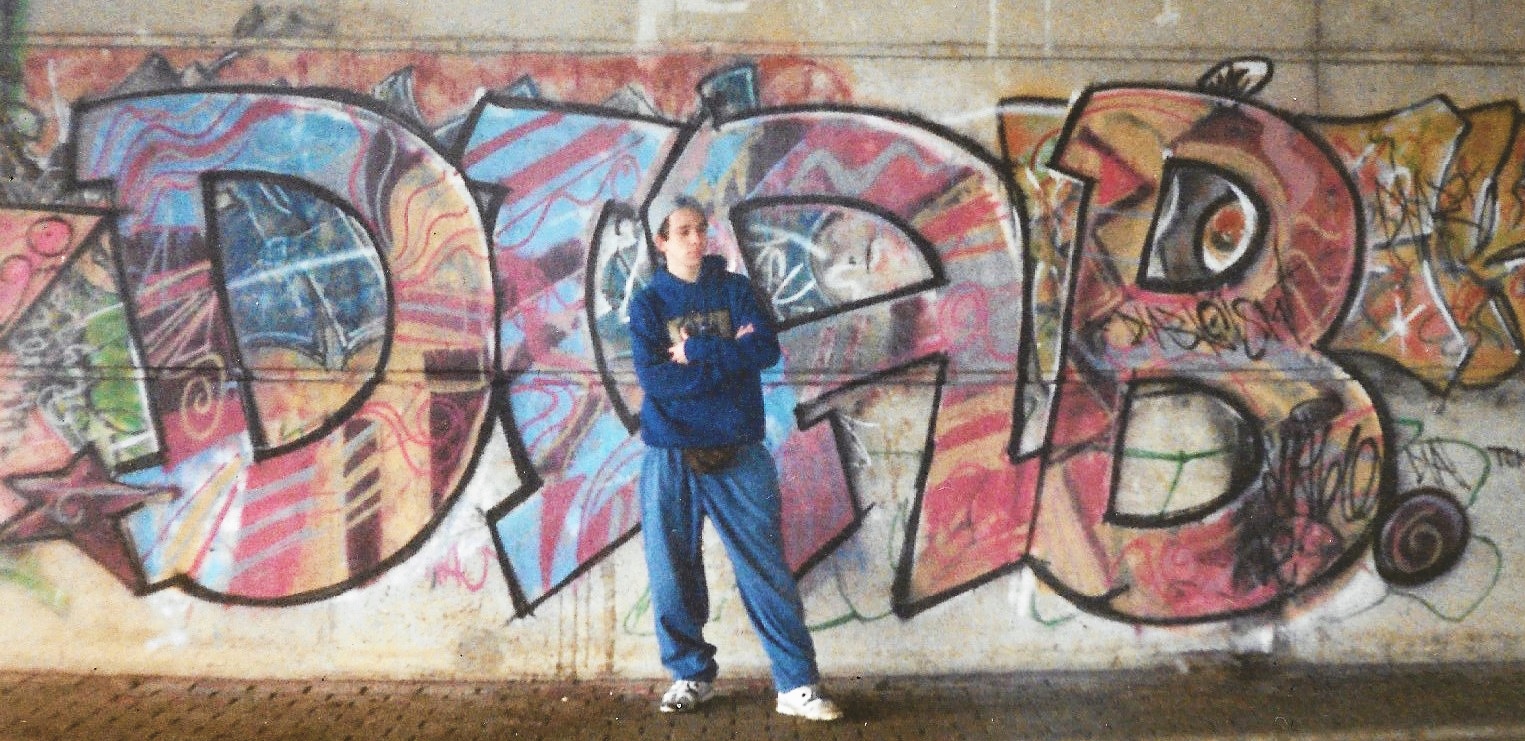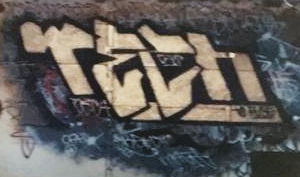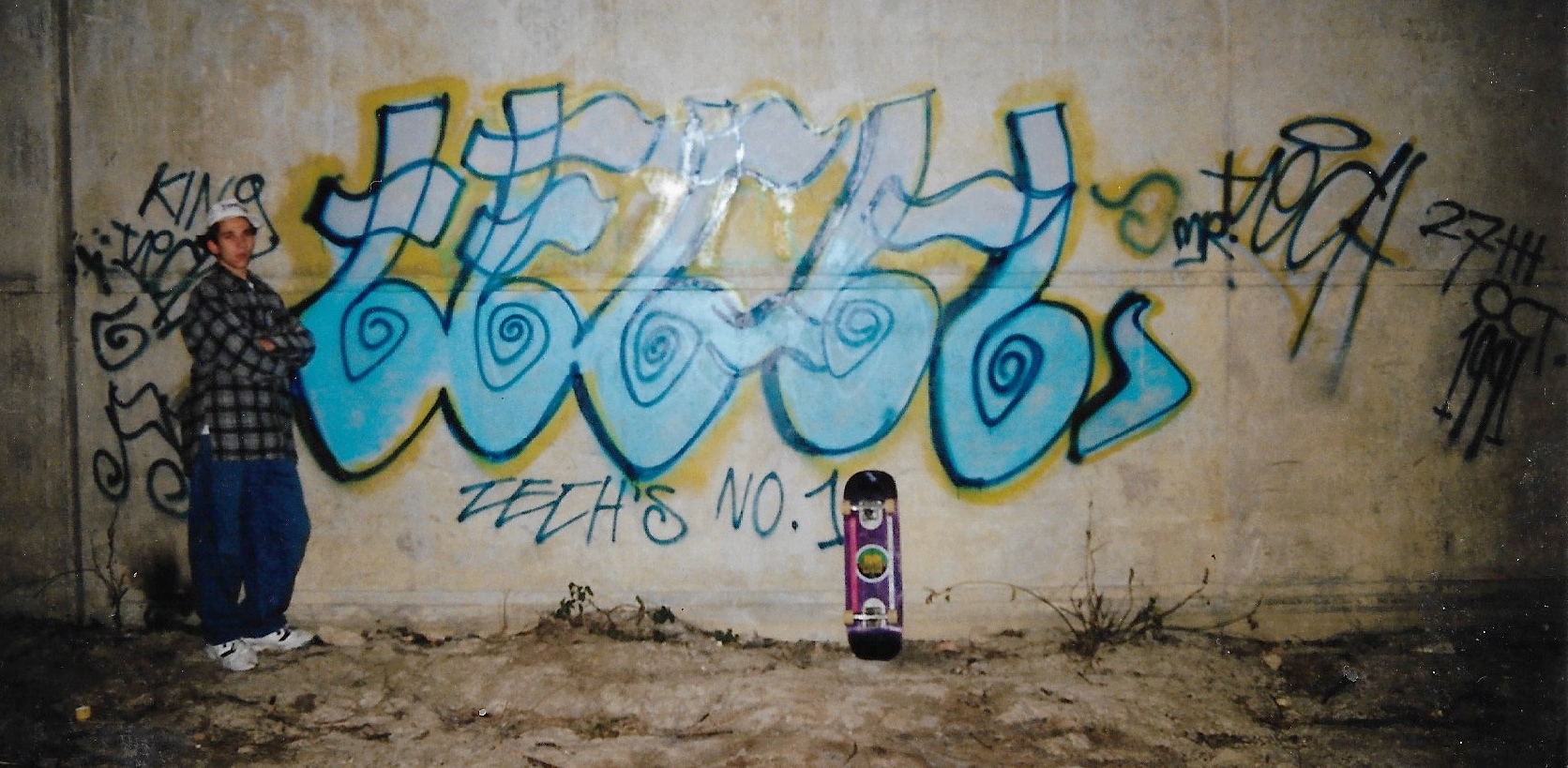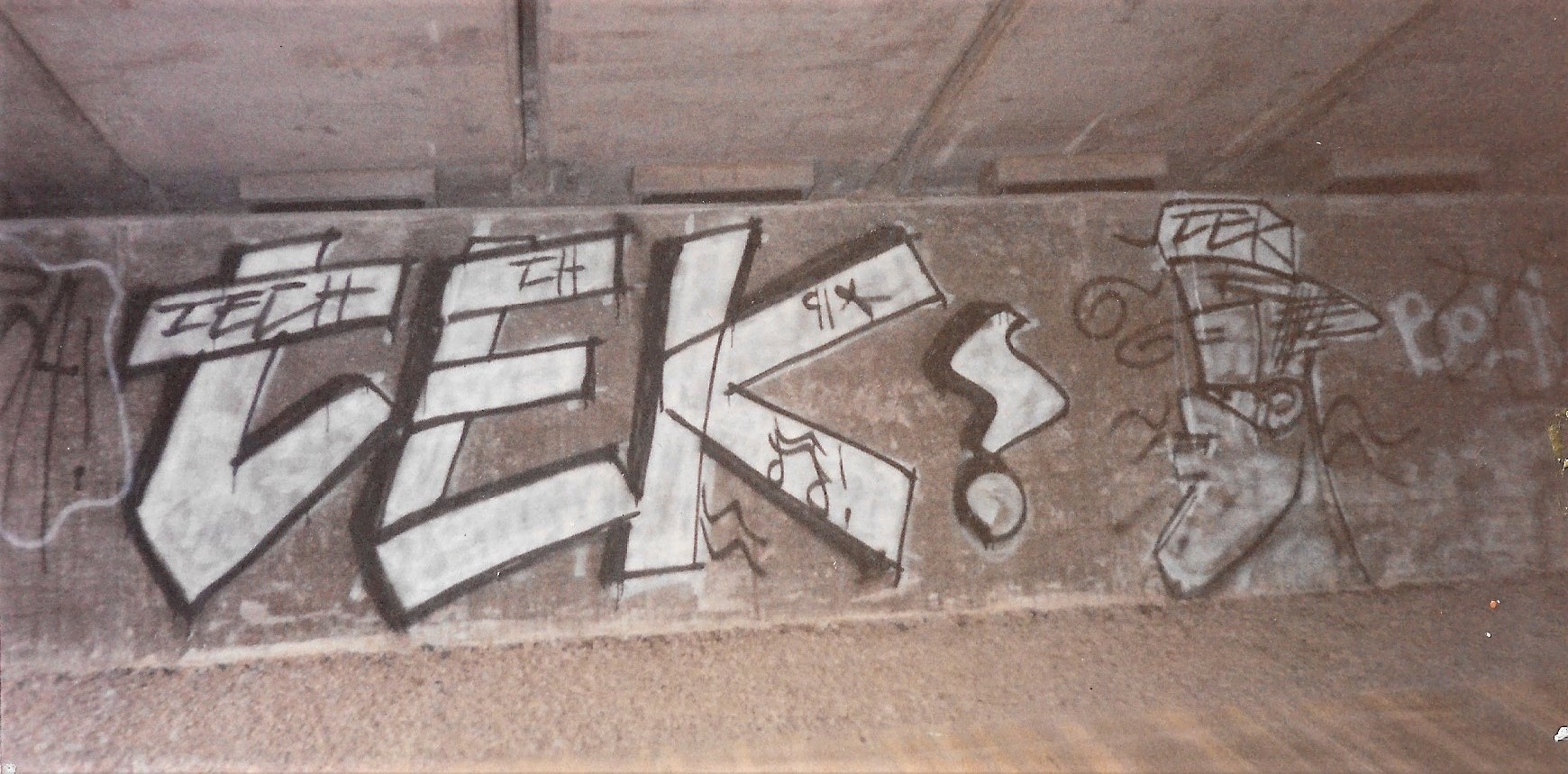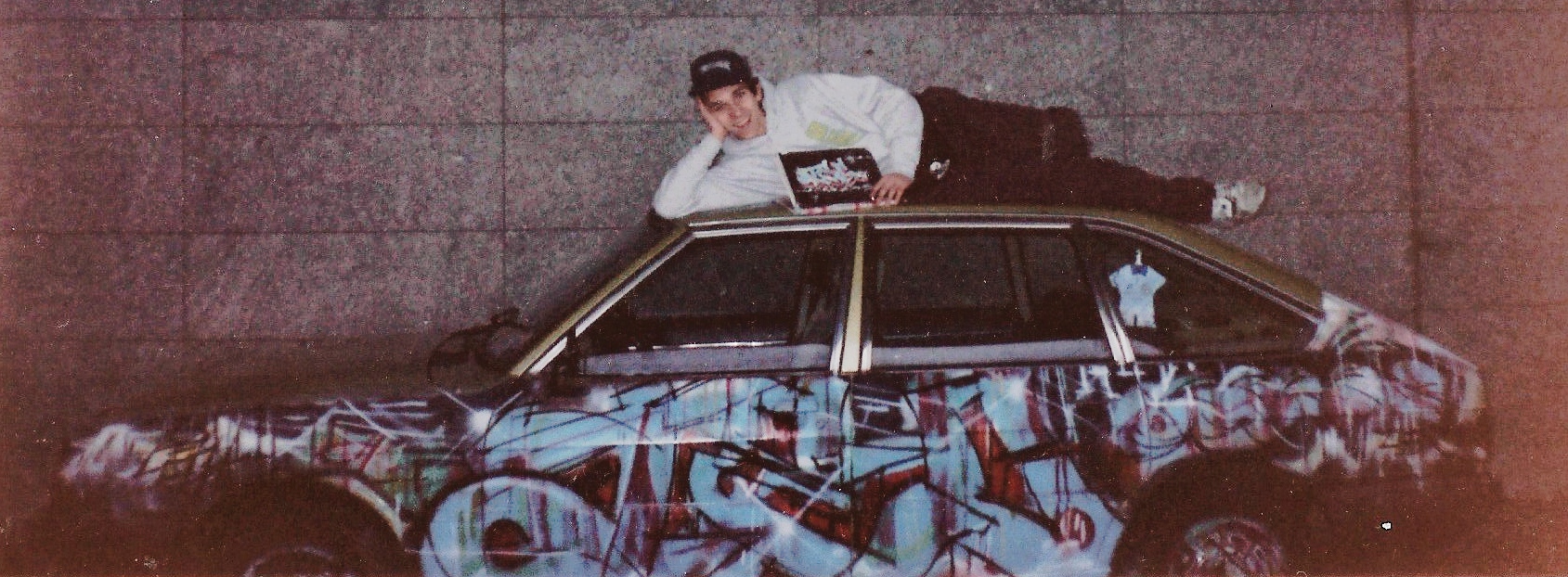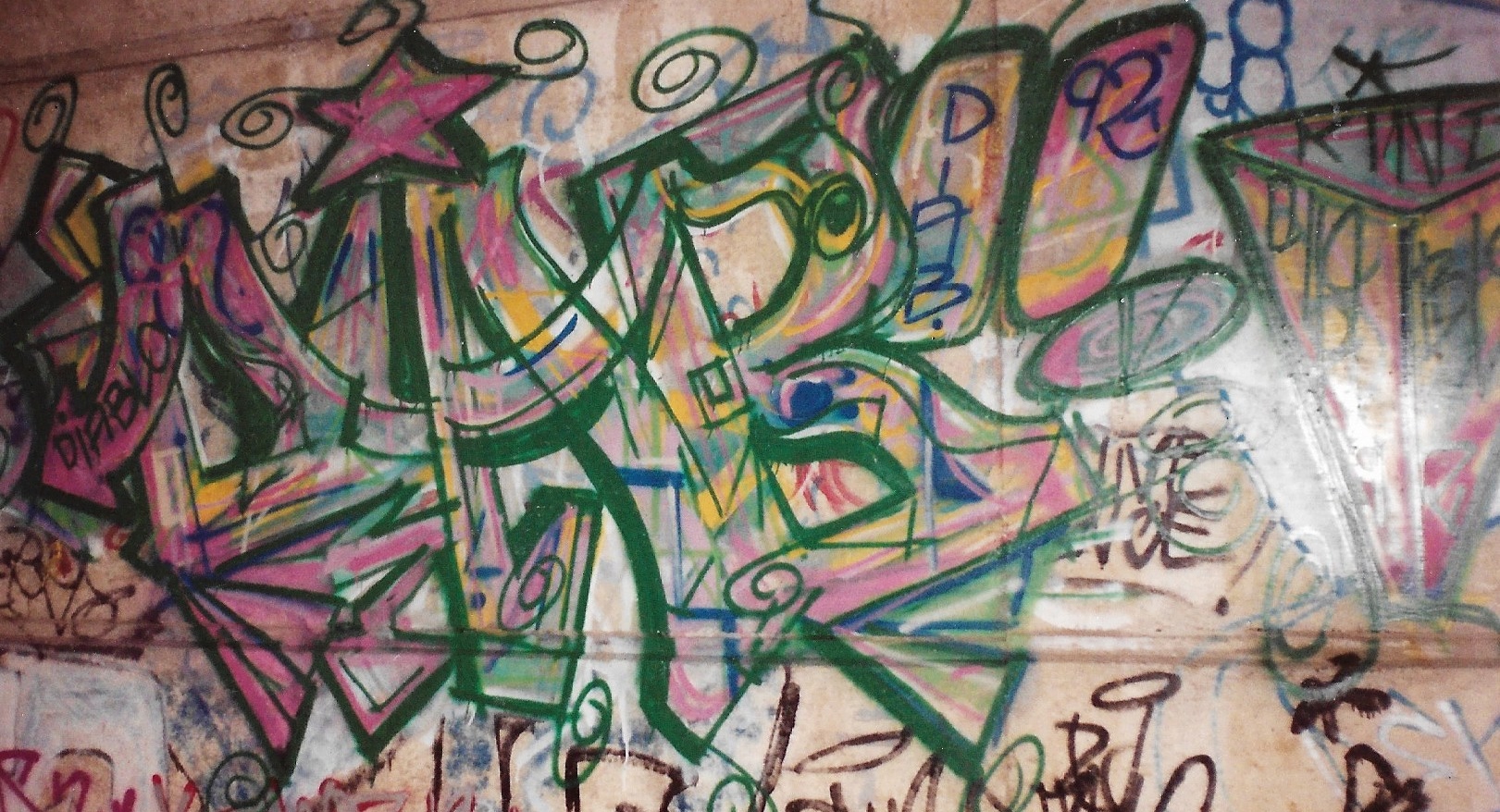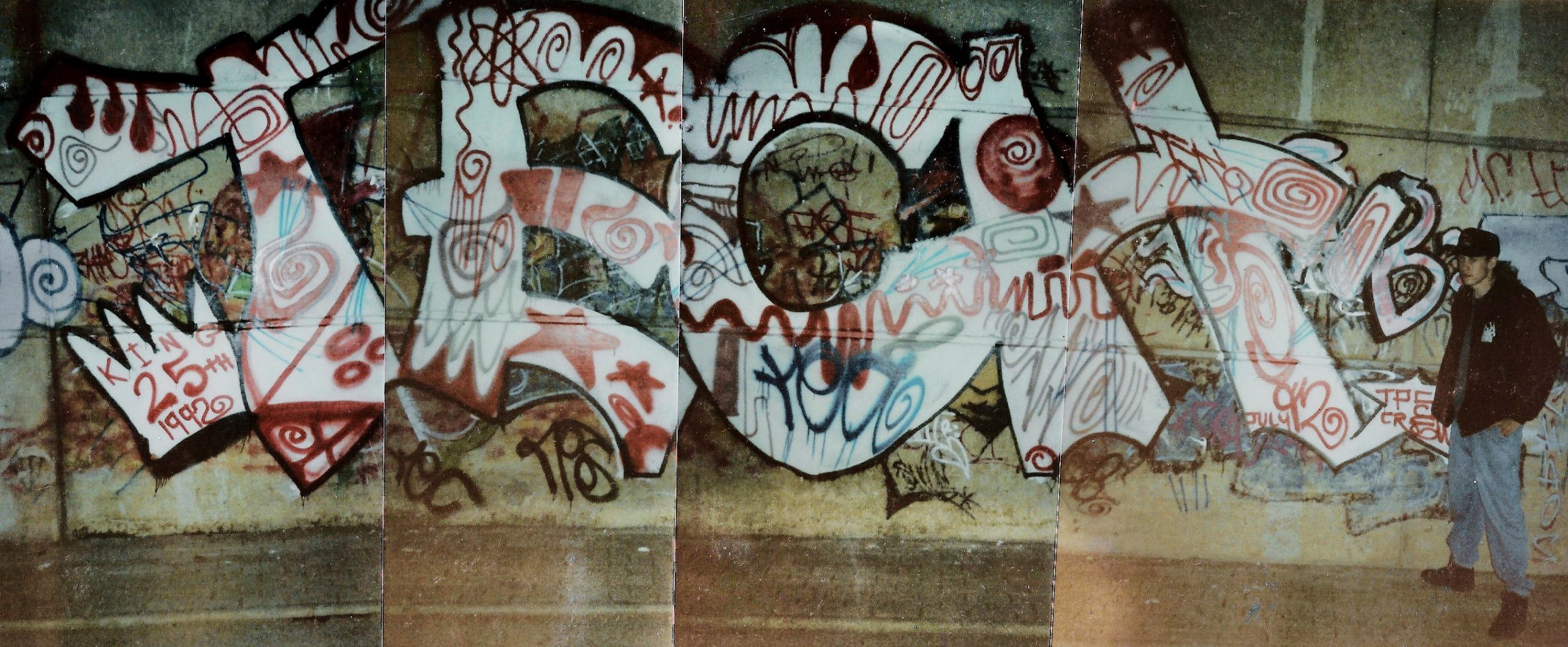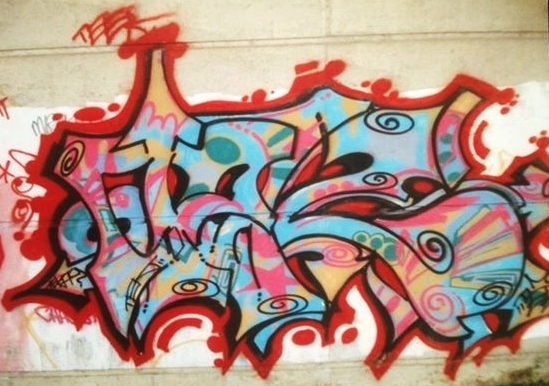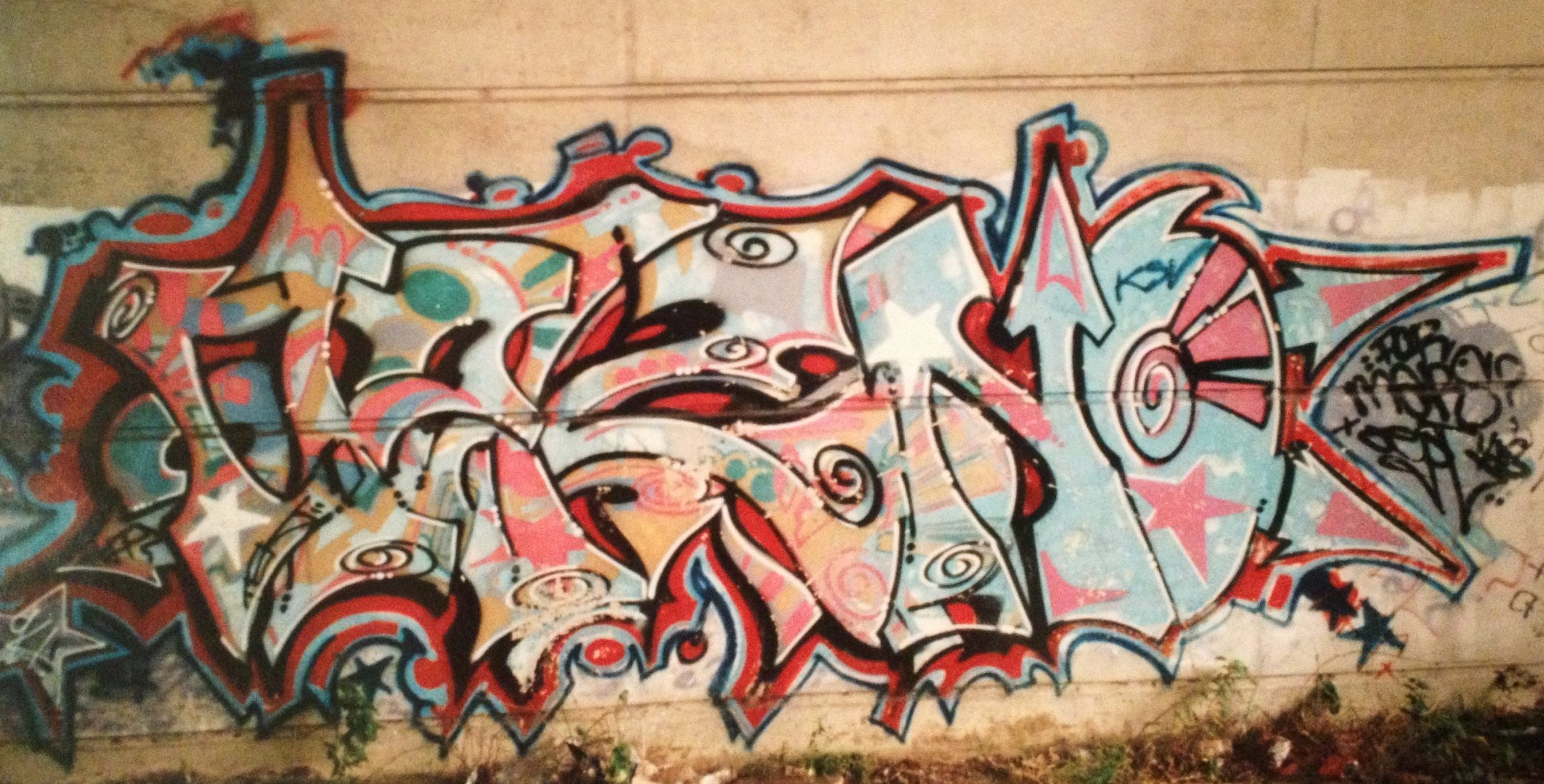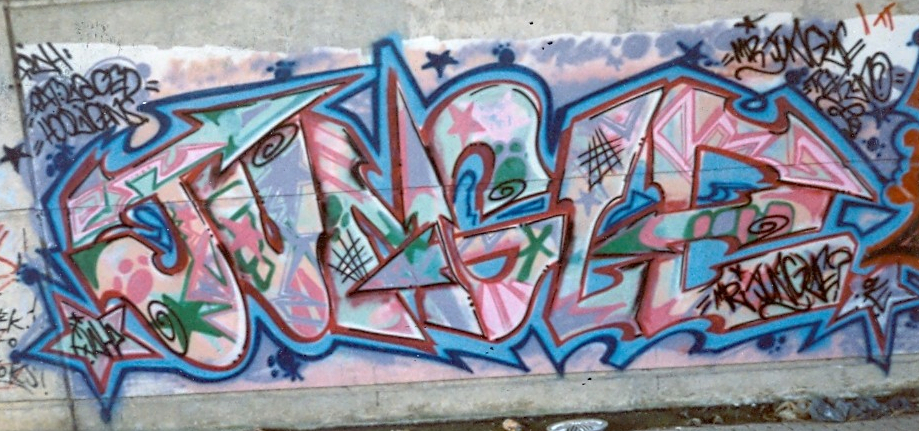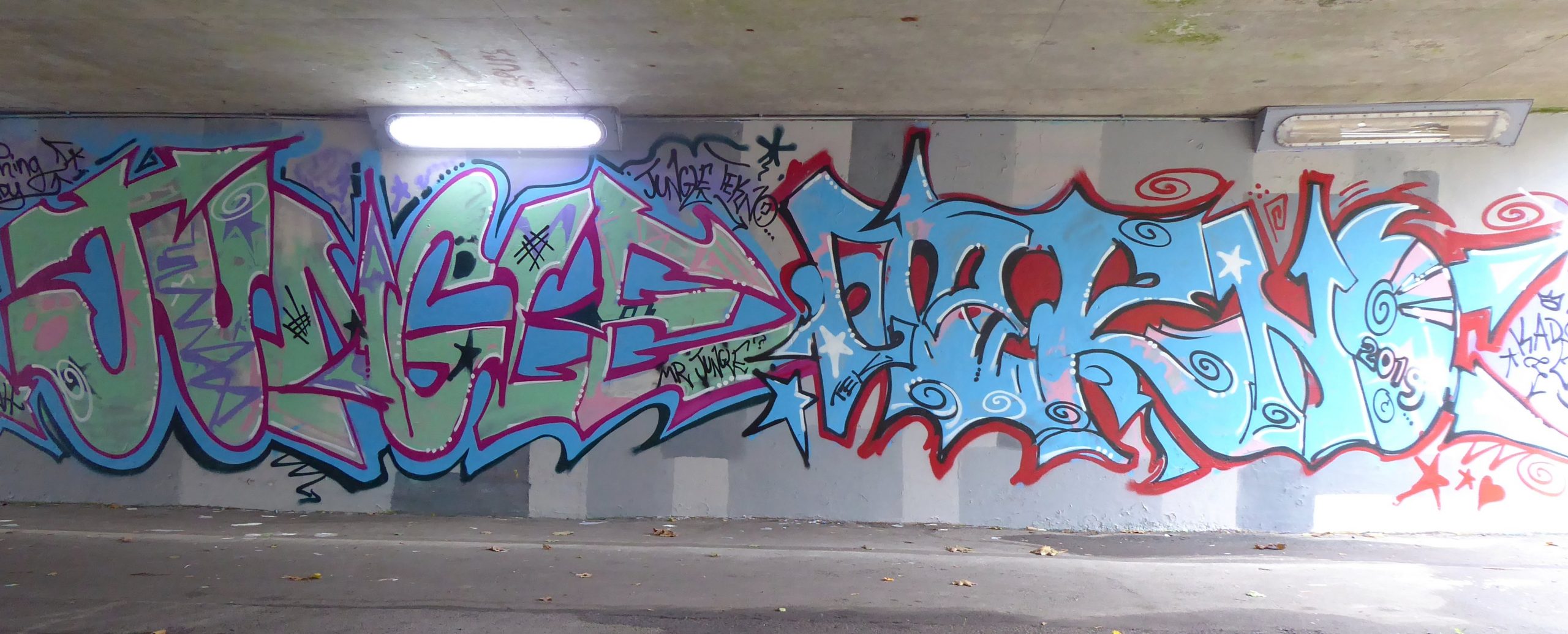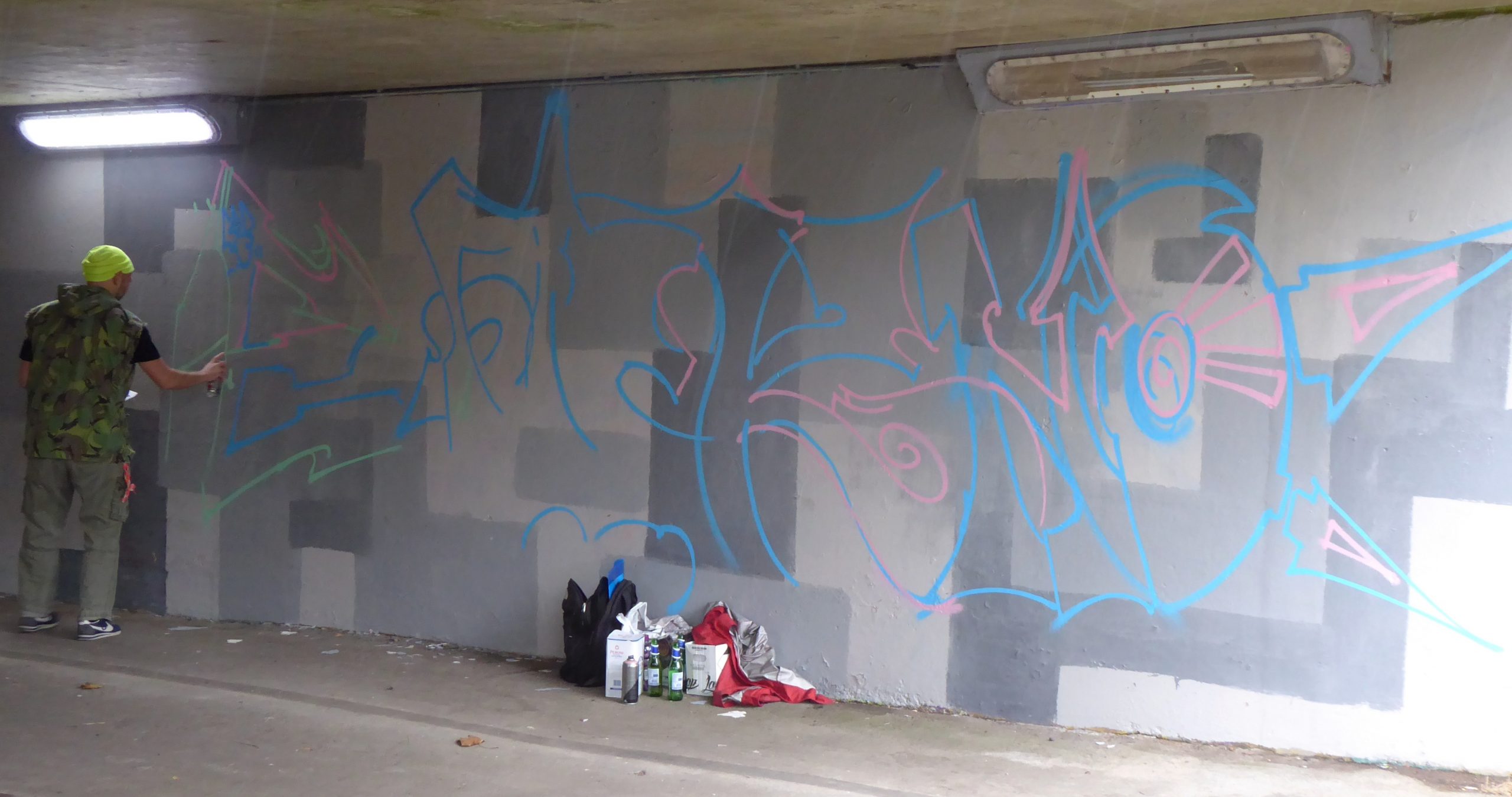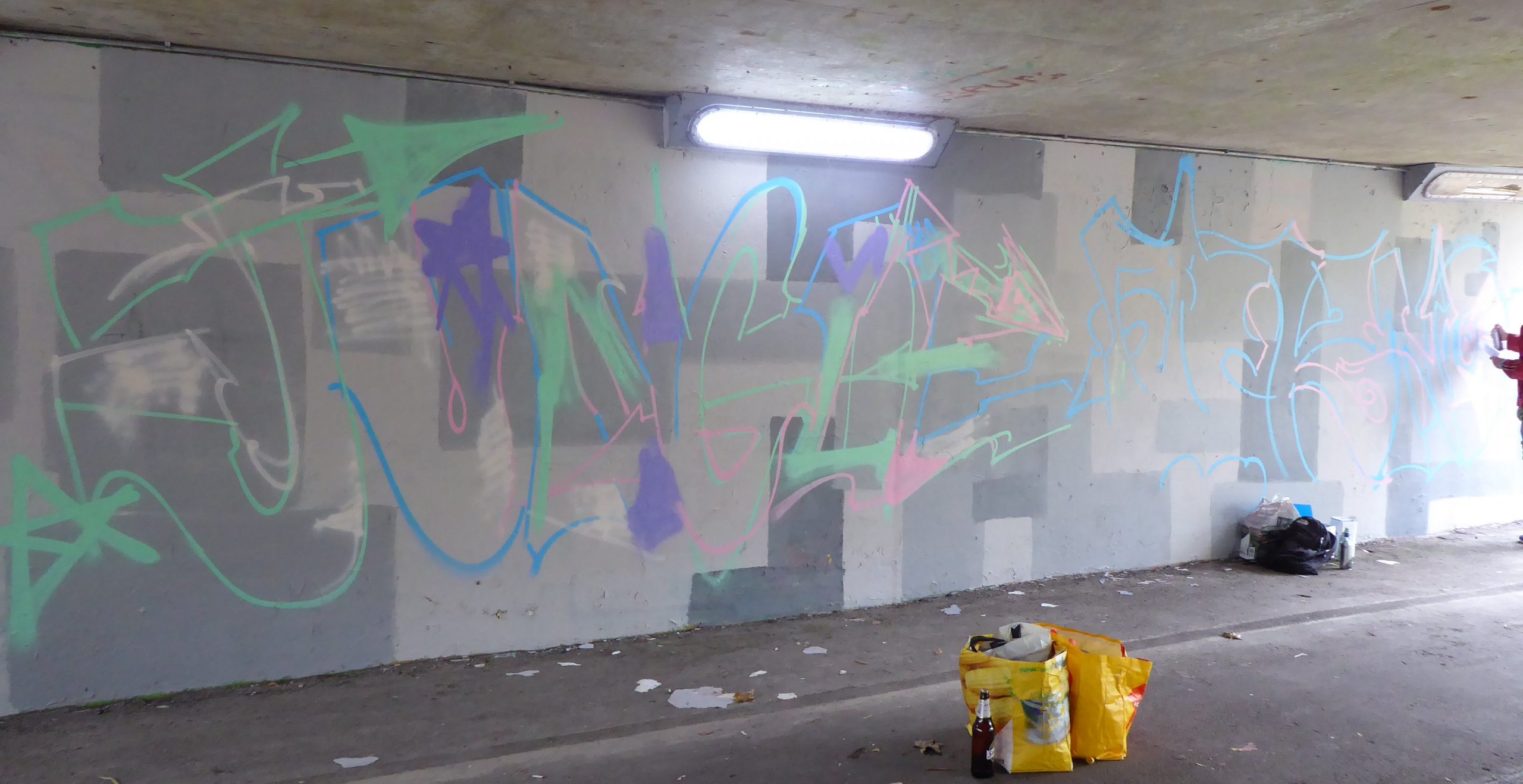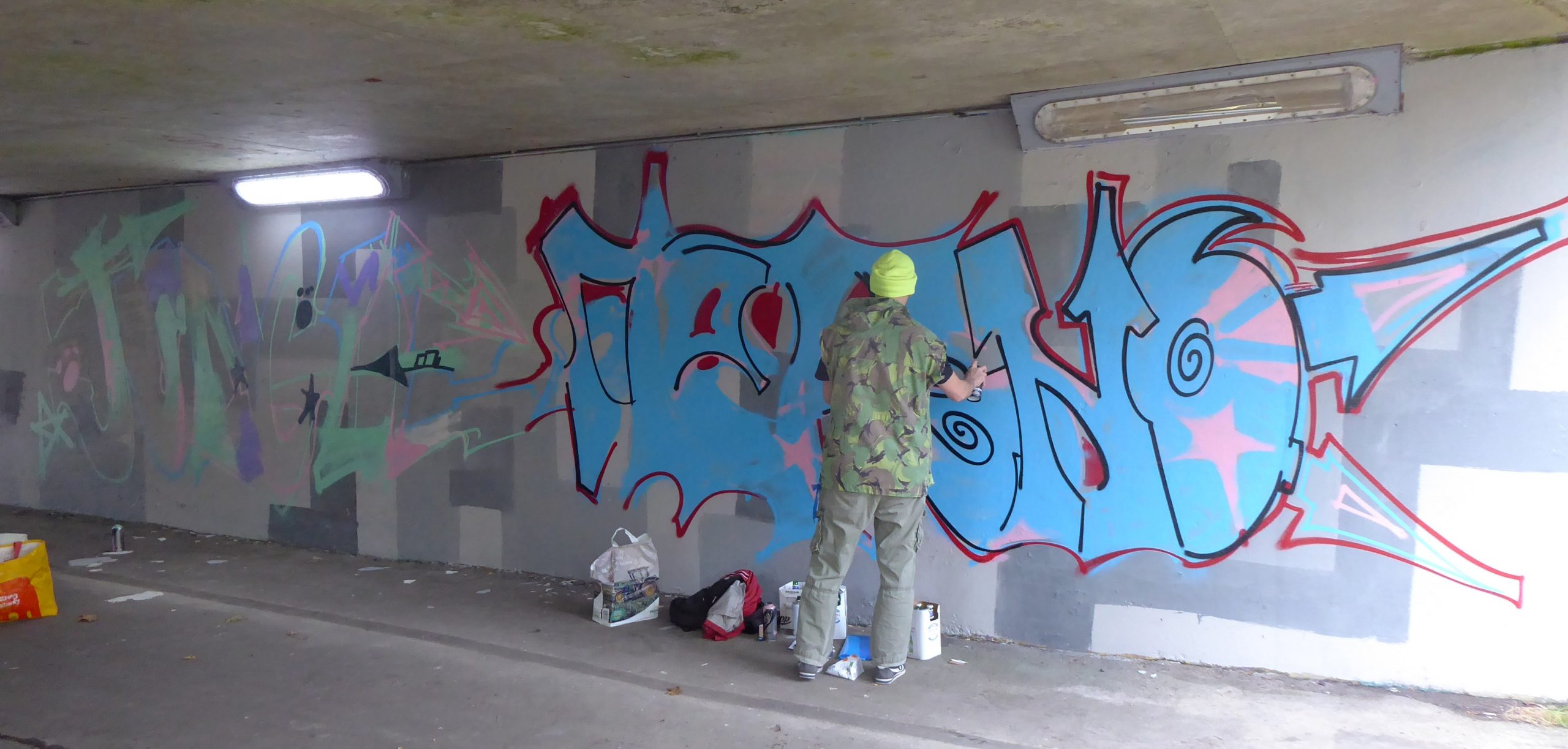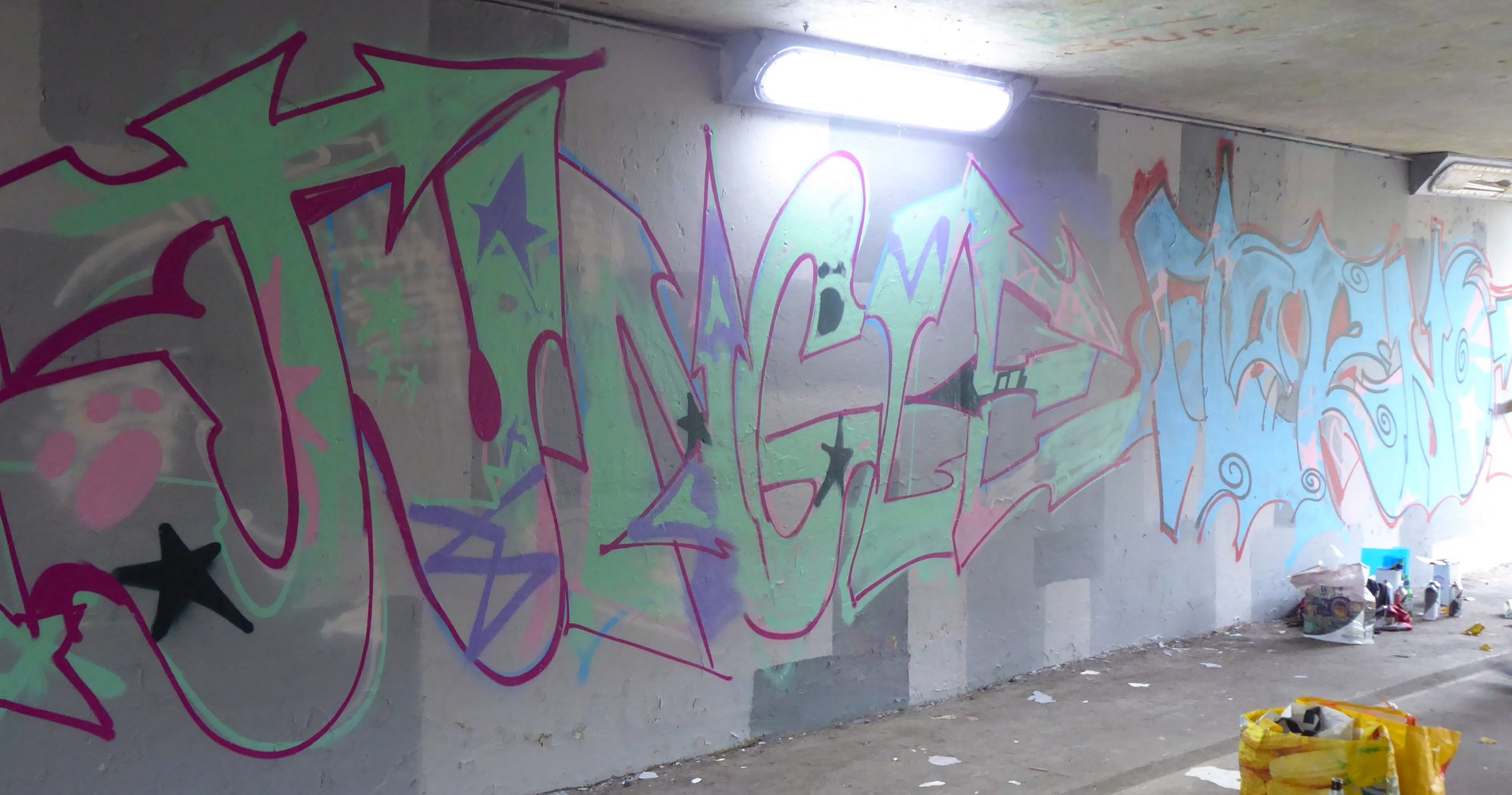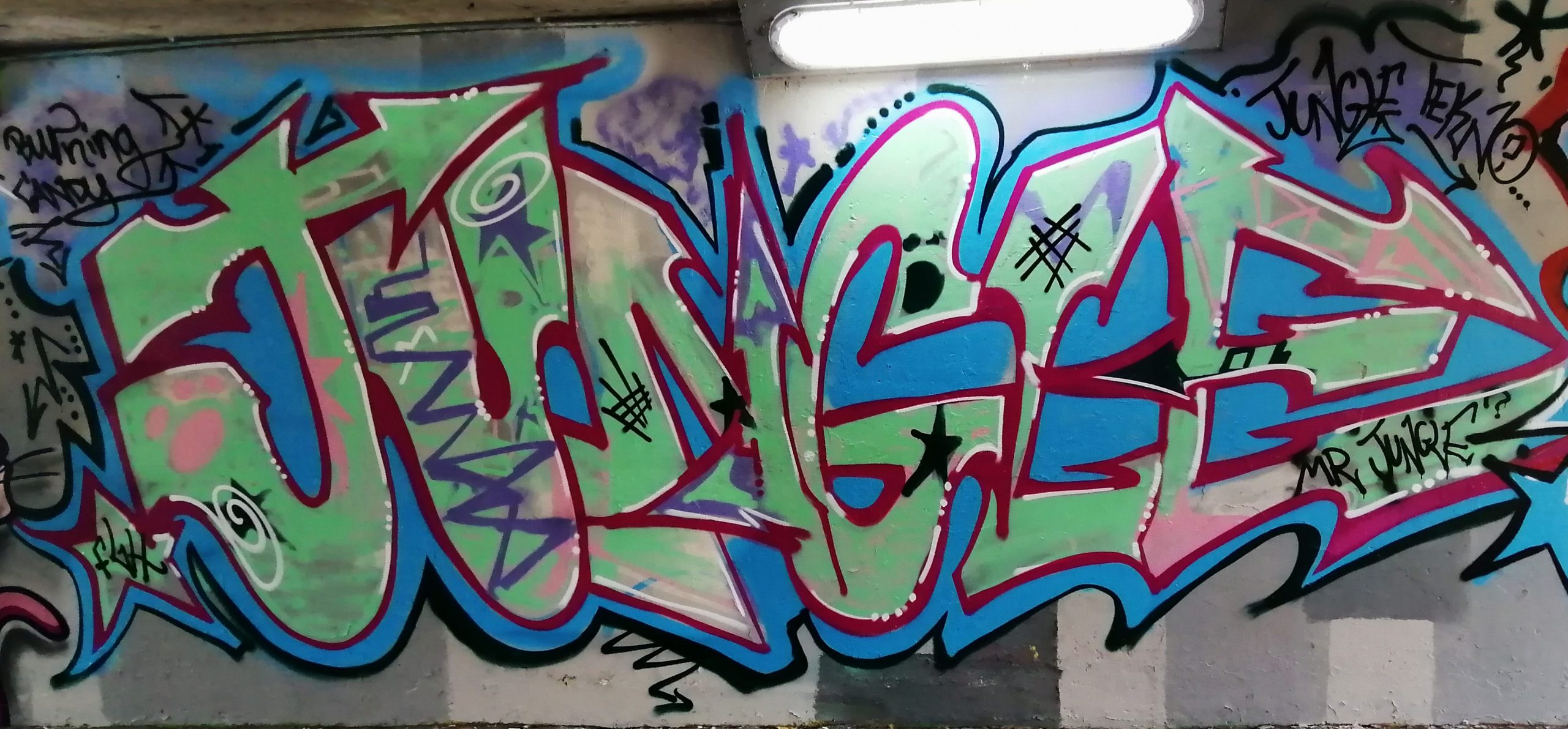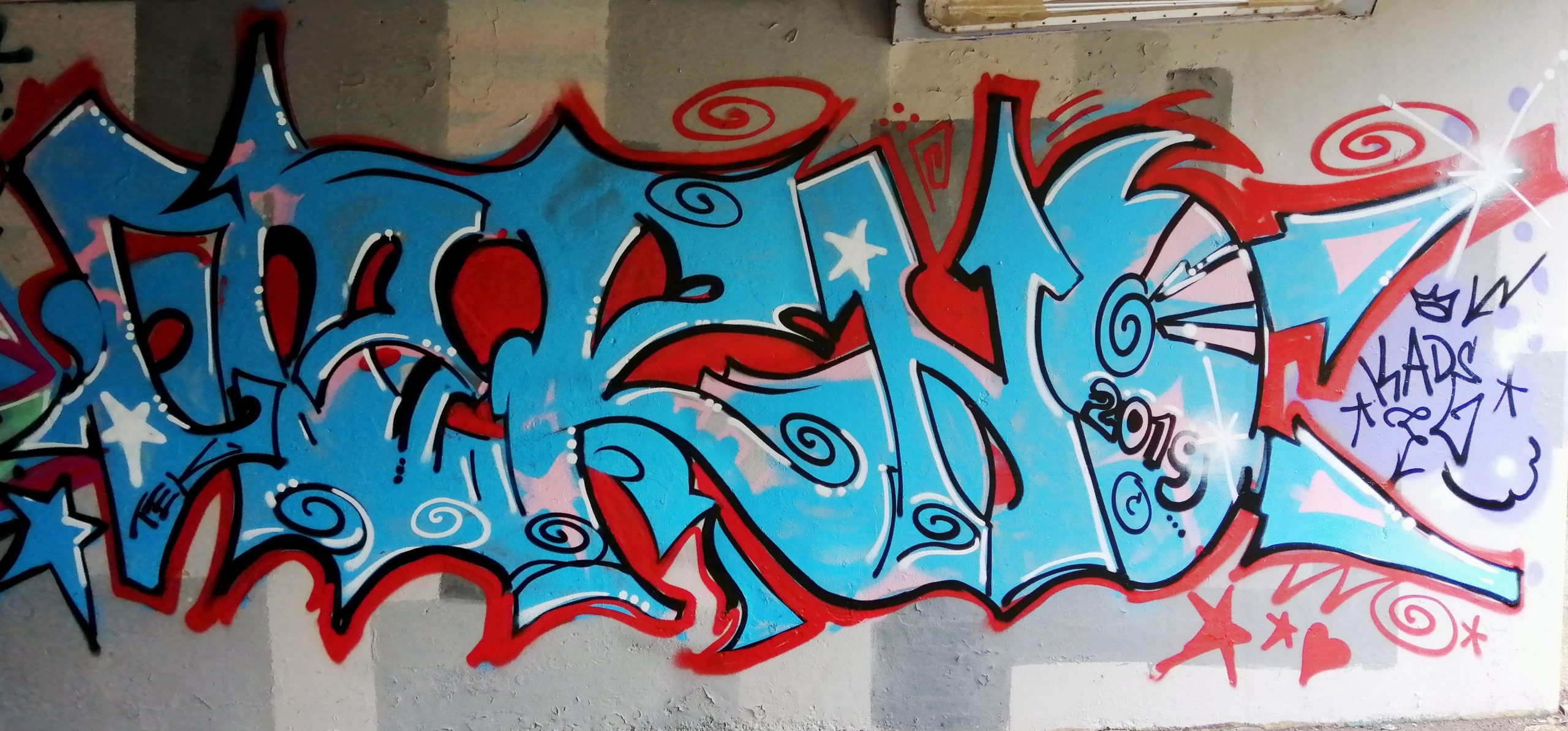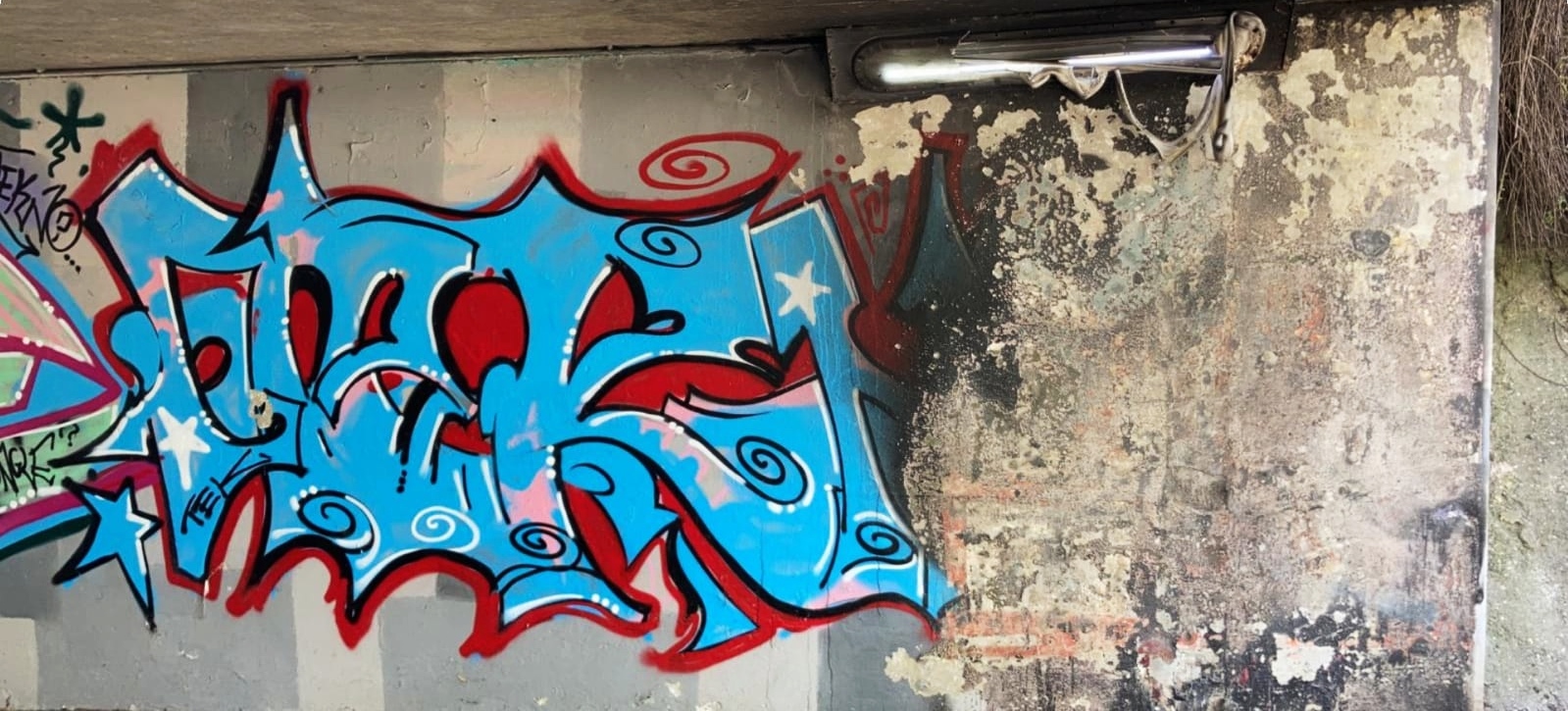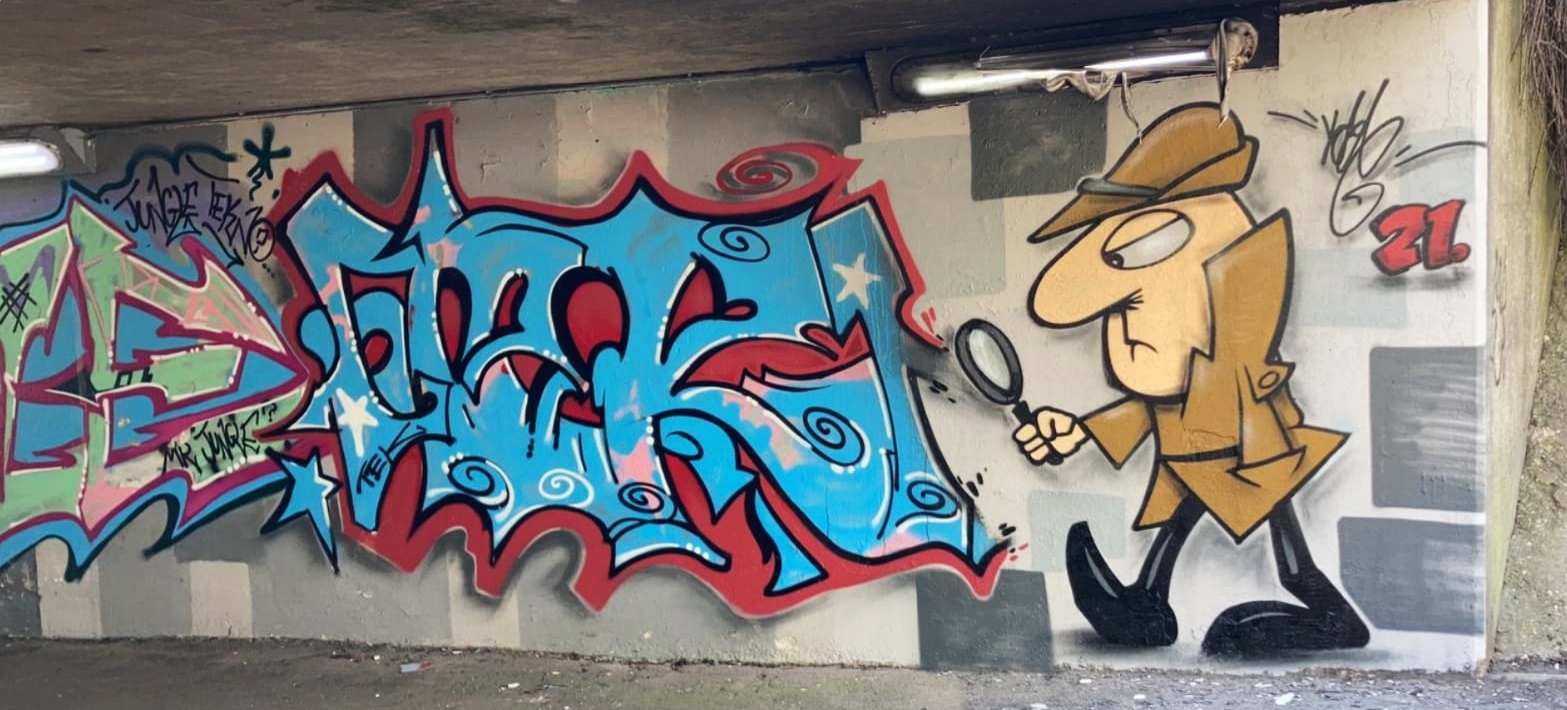James Jessop is one of several pioneering graffiti artists to paint Milton Keynes network of bridges and underpasses and has been inspired by books such as Subway art and Spray can art. In the 1980s during UK Hip Hop’s first wave James established himself as a graffiti artist in his home town of Leighton Buzzard before expanding in to neighbouring areas such as the newly established city of Milton Keynes. James‘s achievements are already well documented online but in this article we would like to focus on his pioneering contributions to Hip Hop, Skate-board and Street culture in Milton Keynes during the late 1980s and early 1990s.
“Diab” by James Jessop – Milton Keynes, 1992.
During the 1980s Milton Keynes became a local hub for street culture. The architecture of Milton Keynes provided a perfect environment for skateboarding and the numerous bridges and underpasses have served as canvases for taggers and street artists over the years. In the early 1980s James practiced and developed his artistry encompassed by a newly established UK Hip Hop culture.
on Friday 18th April 1986 I was given Subway Art for my 12th birthday. From that point, every day, I would make at least one A4 transcription drawing, paper pieces or outlines whatever you want to call them, coloured in felt tips taken directly from its pages. (James Jessop, blog.vandalog.com, 2013).
By the late 1980s James had established himself as an artist and local pioneer in Leighton Buzzard located just outside of the MK boundary.
“Tech” by James Jessop, 1989.
In the 1980s the Milton Keynes landscape looked very different to how it appears today. The city was in it’s early stages of development and the population was a lot smaller than it is at the time of writing this article. During these early years there were a handful of local street art pioneers such as Rolek One and Urbanist, who’s families had relocated to Milton Keynes during it’s early stages of development. Then there were others local participants like The Criminal Minds from Buckingham and James Jessop from Leighton Buzzard that grew up in the local area and branched out to become part of the Milton Keynes Hip Hop community.
“Tech” by James Jessop – Milton Keynes, 1991.
With the exception of James, after 1990 all the first generation writers mentioned above had stopped painting on the streets of Milton Keynes due to relocation or because they began to focus on other creative opportunities such as graphic design, flyers and record covers. During the early 1990s James also undertook a full time B-Tec general art and design course in Luton but remained actively skating and writing in Milton Keynes.
Tek by James Jessop – Milton Keynes, 1991.
From it’s inception many participants in Hip Hop culture have sought to establish it as a unifying force. The below mural entitled “End Racism” was created by James as a direct response to racist far right graffiti that read “White Power” and appeared on the Milton Keynes train line during 1991. The End Racism mural was painted directly over the top of the racist wording transforming the negative original message in to a positive message of togetherness.
“End Racism” by James Jessop – Milton Keynes, 1991.
As James progressed as an artist he began to experiment and applied his graffiti art techniques to other mediums such as canvasses and boards. An example of this experimentation can be seen in the below photo of friend Chris Ince‘s car which was painted by James in 1991. The photo was taken at the Milton Keynes bus station now known as The Buzy.
“Car art design” by James Jessop – 1991.
Aside from pioneering local street art James Jessop is also recognised as a local skateboarding pioneer and has been part of the MK skating community since the 1980s. The below video footage is taken from a BBC 2 program called Dance Energy that was presented by Normski (Norman Anderson) and aired during the early 1990s. James Jessop appears alongside other local skate boarders at around 2 minutes in to the video which was filmed when the Dance Energy crew visited Milton Keynes.
Dance Energy – BBC street culture series, Milton Keynes – 1992.
James Jessop is also involved in and has contributed to a project called MK Skate that was set up by local skate boarders with the aim of documenting the skate history in Milton Keynes. Aside from interviews and memorabilia James was commissioned to paint an exclusive piece of artwork for the MK skate project which also included several local exhibitions and a book. For more information on James‘s involvement as well as other pioneering local skaters please visit the MK Skate website.
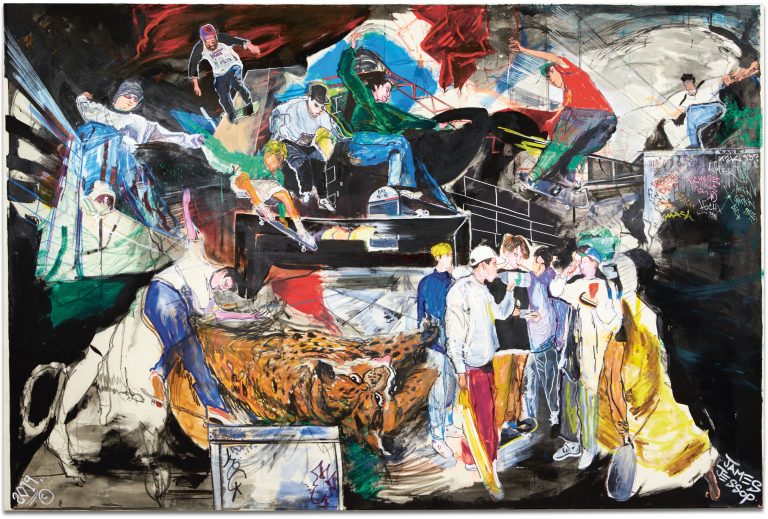 “MK Skate styles” by James Jessop – 2019.
“MK Skate styles” by James Jessop – 2019.
Towards the end of 1992 the population of active graffiti artists painting in Milton Keynes had declined significantly. With the exception of UCP (UnderCover Prophecy) who’s activity was mostly confined to Buckingham, and an occasional Milton Keynes tagger here and there, James was the only active artist painting on a street level. In 1992 James was accepted to study a degree in fine art at Coventry University and later in the year re-located to Coventry City. Below are some images of James‘s work while he was still active in the Milton Keynes area.
“Diab” by James Jessop – Milton Keynes, 1992.
Tech by James Jessop – Milton Keynes, 1992.
One of James‘s landmark local pieces was developed in several stages between the years 1993 and 1994. Due to it’s secluded location the finished piece entitled “Jungle Tekno” remained intact for over 10 years and in 2019 James returned to Milton Keynes to recreate the mural as part of an underpass regeneration project organised by Arkade Graphics.
“Jungle Tekno” by James Jessop – Milton Keynes, 1994.
The first section of the piece was created sometime in 1993 and read “Tek”.
“Tek” by James Jessop – Milton Keynes, 1993.
Sometime in 1994 James added more lettering to the end of the piece creating the word “Tekno”.
“Tekno” by James Jessop – Milton Keynes, 1994.
Finally the word “Jungle” was added to the beginning of the piece spelling “Jungle Tekno” which was a popular form of UK Dance music at the time.
“Jungle” by James Jessop – Milton Keynes, 1994.
In 2019 James returned to Milton Keynes to contribute to an underpass regeneration project organised by Arkade Graphics. The team was made up of numerous pioneering local graffiti artists and covered the double underpass that runs between the estates of Tinkers Bridge and Simpson. The first section of the underpass was jointly painted by Arkade, Rolek One, Urbanist, Chase One (The Criminal Minds) and James Jessop. This event marks a historical moment in Milton Keynes street art history as it was the first time pioneering local artists that established themselves during the 1980s worked together to create a joint mural.
“Jungle Tekno 2019” by James Jessop – Tinkers Bridge, Milton Keynes, 2019.
At Arkade‘s request James reconstructed the “Jungle Tekno” piece painted during the early 1990s using his original sketches. The Break to the beat team were fortunate enough to be invited along to document the Tinkers Bridge Paint Jam which took place in October 2019. The below slideshow contains James‘s artwork at various stages of creation.
“Jungle Tekno 2019” Slideshow by James Jessop, Tinkers Bridge, Milton Keynes, 2019.
During 2021 part of James‘s mural was destroyed by fire damage caused by an old mattress that was dumped in the underpass and later set alight. The fire destroyed the last two letters of the word “Tekno” as shown in the below image.
Fire damage – 2021.
As James now resides in Scotland he was unable to return to Milton Keynes to repair the damaged part of the mural so Arkade made an adaptation adding the Inspector Clouesau character to conceal the fire damage. At the time of writing the piece now reads “Jungle Tek” with a character by Arkade.
Mural repairs by Arkade – 2021.
James Jessop graduated from Coventry University in 1995 obtaining a BA Hons degree in Fine Art. In 1997 James was accepted in to The Royal College of Art in London and in 1999 he graduated with an MA in Painting. Today James Jessop is a world renowned artist. What we have covered in this article is just a small selection relevant to the Hip Hop culture that has evolved in and around Milton Keynes, England. To further highlight the influence of graffiti art on James Jessop‘s work please check out the below two videos:
James Jessop (Art star no 33) – Ralph Lauren, Polo Art Stars project, 2010.
In the Polo Art Stars video James Jessop talks about how New York street culture influenced him as an artist growing up in the UK and how subway graffiti art contributed to his work for the Polo Art Stars Project. According to the website vandalog.com the completed Art Stars were displayed in select Polo Jeans Co stores across Europe, before being assembled in a public exhibition in London during 2010.
DOTS: Bomb Chaser – Subway graffiti history, 2011.
In the second video James Jessop visits New York to meet photographer and co author of “Subway Art” Martha Cooper. During his visit James also gets to meet and hang out with several of New York’s pioneering graffiti artists including Futura 2000 and Blade. The Subway Art publication is regarded by many as the graffiti art bible and features artwork by many of New York City’s pioneering graffiti artists. The documentary entitled “DOTS: Bomb Chaser – subway graffiti history” contains footage of James Jessop recorded in 2009 and 2010. The documentary was first screened in London during 2011 with several pieces of artwork created by James Jessop.
For further information on James Jessop please see:
- James Jessop.com
- Artimage (James Jessop)
- James Jessop (Twitter)
- James Jessop (Facebook)
- Horrific Recordings
To keep up to date with Break to the beat news, projects and events please follow our social media pages.

